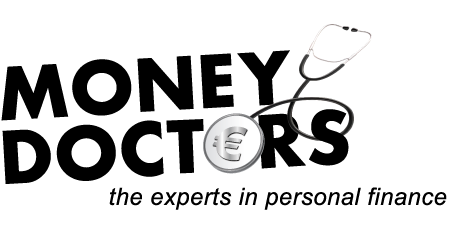Neither a lender nor a borrower be is the immortal Polonius line in Shakespeare’s Merchant of Venice but that’s all very well if Christmas wasn’t so expensive, we didn’t have a cost of living crisis and we had some savings. With the lockdowns we all managed to save more than usual but we are running out of those savings and still tend to go mad at different times of year… financially.
Reality can be harsh…and to help the Christmas ‘landing’ John Lowe of MoneyDoctors.ie dispenses some prescriptions for those who need to borrow…
Up and down the country, householders will be ignoring letters, bills and reminders over the coming days and weeks from a variety of creditors and just wondering how they are going to address the ever-increasing debt mountain. So if you have spent it and you do now have to borrow, where do you go to if your family or friends cannot help you out and ignoring credit card options ? This is called post-Christmas planning…
First port of call when borrowing for this type of short term facility ( 12 months or less ) should be your local community based credit union. They only exist to lend – they are generally more flexible and responsive with interest rates more competitive than banks. With 2.8 million members in c. 300 credit unions around Ireland, if you have to borrow for your past year expenses, you will be doing your community a service by borrowing from them. You have to be working or living near a credit union and have a share account with them for at least a month before applying for a loan. Where some credit unions looked for 25% of the loan sought lodged in the share account, that figure for some offices is now only 2.5% ( so € 25 if you want to borrow € 1,000 )
Your own bank is second and next on the list – they know you, probably have your salary mandated to your bank from your employment and have your credit history as a reference for any future borrowing requirement. You may have more hoops to go through but if you are approved the interest rate will not be punitive.
The last resort is the licensed moneylenders – they carry on the business of moneylending under the specific terms of the license granted by the Central Bank of Ireland. A moneylending agreement is defined as “a credit agreement into which a moneylender enters or offers to enter, with a consumer in which one or more of the following apply:
- The agreement was concluded away from the business premises of the moneylender or the business premises of the supplier of goods or services under the agreement
- Any negotiations for, or in relation to the credit were conducted at a place other than the business premises of the moneylender or the business premises of the supplier of goods or services under the agreement
- Repayments under the agreement will, or may, be paid by the consumer to the moneylender or his representative at any place other than the business premises of the moneylender or the business premises of the supplier of goods or services under the agreement or finally
- Where the total cost of credit to the consumer under the agreement is in excess of an APR of 23 per cent., or such other rate as may be prescribed.”
While the Central Bank has not allowed practices such as pay-day moneylending to enter the Irish market, they do allow these moneylenders to charge substantial interest rates and charges.
The number of licensed moneylending firms has changed in recent years from 47 in the 2007 to 37 today. Of the 37, 33 are actively engaged in lending. The business models operated by moneylending firms fall into four categories:
- home collection firms where repayments are collected at the customer’s home;
- remote firms where payment is made directly to the firm e.g. by direct debit;
- retail firms involved in the provision of goods on credit with repayments being made by a variety of methods e.g. cash, direct debit; and
- other firms who operate on the basis of running accounts e.g. catalogue companies. Some firms will have products in more than one category.
In recent research, the most common loan amount was found to be between €200 and €500 with the most frequent term offered approximately 9 months, and an APR of 125%.
Significantly over 25% of borrowers surveyed experienced difficulties in making repayments in the past 18 months, with 63% of those reporting that repayment difficulties were caused by a drop in household income.
In addition to the quoted APR many of the lenders also apply a collection charge which can be as much as 10 cent in the euro. The biggest and best known licensed moneylender quotes an APR of 187.22% but does not apply a collection charge. One lender based in South Co Dublin has an APR of 188.45%, but the APR when the collection charges are factored in comes to a staggering 287.72%
For a list of authorised moneylenders in the Central bank register, click on the following link : http://registers.centralbank.ie/DownloadsPage.aspx
Final bit of advice ? Start saving in a Regular Saver account ( save between € 100 and € 1,000 per month for up to 12 months ) for all your spending needs and you won’t know yourself at the end of 2024..AIB bank and Bank of Ireland have the best rates currently at 2% ( 1.34% after DIRT Tax )

